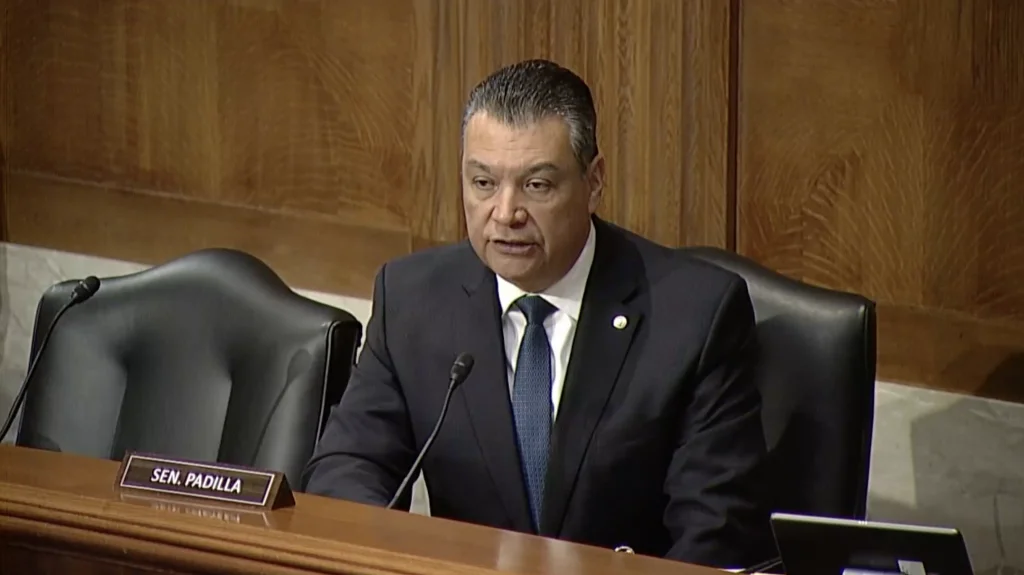Padilla Highlights Successful California Model to Reduce Carbon Emissions Nationally

WASHINGTON, D.C. — Today, during a hearing held by the Senate’s Environment and Public Works Committee, U.S. Senator Alex Padilla (D-Calif.) highlighted the effectiveness of California’s Low-Carbon Fuel Standards (LCFS) program in lowering greenhouse gas emissions and the need to implement a similar national program to reduce emissions.
During the hearing, titled “Low Carbon Transportation Fuels and Considerations for a National Clean Fuels Program,” Padilla questioned Michael Graff, Chairman & CEO, American Air Liquide Holdings, Inc. and Geoff Cooper, President & CEO, Renewable Fuels Association.
While speaking with Mr. Graff, they discussed California’s LCFS program and how it was integral to Air Liquide’s decision to invest in clean hydrogen production for zero-emissions vehicles. In Padilla’s conversation with Mr. Cooper, they spoke about Renewable Fuels Association’s pledge to reach a zero-carbon footprint by 2050 and how California’s LCFS program drove their transition. Mr. Cooper emphasized how a similar program at the national level would reduce emissions from the transportation sector.
Key Excerpts:
- PADILLA: The Chairman proud to represent not only a great laboratory of democracy but most populous in diverse state in the nation, largest electorate of any state in the nation and the fourth largest economy in the world. With that being said, let me brag a little bit about California’s low carbon fuel standard. It’s helping to advance a wide range of clean fuels, while at the same time keeping consumer costs low and fostering clean fuel investments. California continues to grow its economy and reduce its emissions.
- GRAFF: There is no question that California’s LCFS program drove the introduction of zero emission vehicles, and in the recognition that in order to go ahead and fuel those vehicles, it recognized that the real point was carbon intensity.
- PADILLA: So if I heard you correctly, the California’s program was paramount in your decision, not just whether or not to make the investment, but were to invest in clean hydrogen production, is that correct?
- GRAFF: It clearly enabled the introduction of the zero emission vehicles, we needed to demonstrate what that could mean, not just for the state of California, but for the country in the world. We wanted to find that opportunity to demonstrate what could happen. And we wanted to locate those things logistically as close to the market as possible. It’s good to minimize logistics, it also creates value creating jobs in those communities in which you’re going to use that product.
- PADILLA: Mr. Cooper, could you elaborate on the RFAs pledged to achieve a net zero carbon footprint by 2050? And talk about how low carbon fuel standards not just in California, but at Oregon, to the conversation may have contributed to innovation in the biofuels sector?
- COOPER: With the adoption of technologies like carbon capture and sequestration, with the adoption of lower carbon farming practices upstream of our facilities, you know, replacing fossil natural gas with renewable natural gas at our facilities, all of those practices and technologies will continue to drive the carbon intensity lower for corn ethanol. And we absolutely think we can get there by 2050 or sooner. And a lot of those investments are happening today and they’re being driven by the California LCFS. […] And so they are making investments and that was the purpose of the program. And that’s why we think a similar program at the national level would be a great way to rapidly reduce emissions from the transportation sector.
###